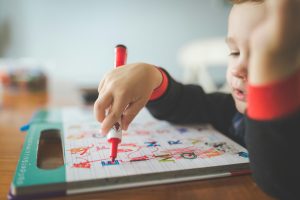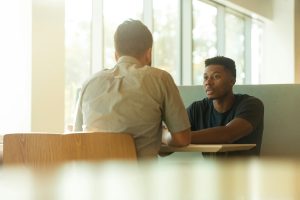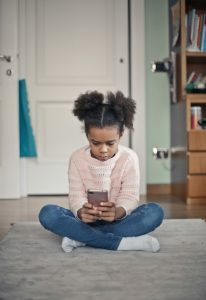The Future of the Library
As technology continues to advance and human beings proceed to communicate, create, connect, and generate content in new ways, so too must the library. No longer simply a holder of books and information, the library and the services provided have expanded to include free programming, a multitude of on-site services, and access to new technologies. But where to begin? How is the library changing and how should it continue to change? Through an examination of the concept of Business 2.0 as defined by Chris Anderson and Jim Daly in 1998, we understand that at the center of it all “stands the customer, demanding better products and services” (Casey & Savastinuk, 2007, p.3). Taken further in 2004 by Tim O’Reilly, the world embraced a new approach to the user experience coined as Web 2.0 (Allen, 2008). In this new information age, technologies such as social web and production applications allowed users to transform. Not only were they consumers, but they were also now producers and collaborators of original content, able to state clearly, and even create, exactly the goods and services they most wanted (Casey and Savastinuk, 2007). It is here that libraries have begun to expand their views, implementing participatory services, and it is here where we will begin.
Like Business 2.0 and Web 2.0, Casey and Savastinuk, in 2007, laid out important tenants of Library 2.0. This included the library as “empower[ing] library users through participatory, user driven services” (Casey & Savastinuk, 2007, p.5). Let’s first explore the concept of a participatory web which indicates that “users play an active role, not only in providing feedback, but also in the actual content creation of the Web itself” (Casey & Savastinuk, 2007). The user is no longer just a consumer, they can actually generate content via blogs, wikis, personal sites, and so much more. But how does this apply to libraries?
Out of the participatory web, one can start to imagine what this could mean for libraries. Essentially, Casey and Savastinuk call for libraries to shift from the historic transactional model. No longer should librarians only provide access to information and assist in the connection to resources. Librarians must reimagine their roles as collaborators and co-conspirators (Mathews et. al, 2018). In this sense, this transactional model begins to flow in both directions changing into a partnership model in which patrons, organizations, and community members become part of exploring and discovering exactly what a library could and should be (Mathews et. al, 2018). The goal is to elevate the individuals outside of professional librarianship as also holders of important and necessary knowledge.
Now let’s look at two examples of what participatory service could look like within a library. In one case, librarians at the University of Colorado, Boulder utilized a participatory model to help identify emerging research needs as well as examine how existing structures helped or hindered library services for science and engineering faculty (Johnson et. al, 2015). Through in-depth interviews with faculty and graduate researchers, the library developed a “holistic picture of the research practices of these users, including areas in which the library currently plays a role as well as potential services we could provide” (Johnson et. al, 2015). From this, the library identified a need for better promotion of services as many users were unaware of what the librarians provided. Similarly, from feedback, the library designed a series of workshops on different research skills and tools (2015).
Another example includes practices adopted by the San Francisco Public Library (SFPL) in its decision-making processes (O’Brien, 2019). For instance, San Francisco planned to renovate a branch of its library. As one of the many ways to include patrons in their decision-making processes, they invited the architect to join in their story time and talk about the renovations. They directly asked these patrons what they wanted to see in the library. SFPL makes clear that “community members are consulted about library decisions, including the creation of spaces.” (O’Brien, 2019). As demonstrated, SFPL is reframing the library as in partnership with those it serves. In both instances, the patrons are not only users of the library, but directly contributed to the services provided, the spaces created, and, ultimately, the future of the library.
References
Allen, M. (2008). Web 2.0: An argument against convergence. First Monday, 13(3). https://doi.org/10.5210/fm.v13i3.2139.
Casey, M.E & Savastinuk, L.C. (2007). Library 2.0: A guide to participatory library service. Information Today, Inc.
Mathews, B., Metko, S., Tomlin, P. (2018, May/June). Empowerment, experimentation, engagement: Embracing partnership models in libraries. Educause Review. https://er.educause.edu/articles/2018/5/empowerment-experimentation-engagement-embracing-partnership-models-in-libraries.
O’Brien, C. (2019, June 24). How San Francisco’s public libraries are embracing their changing role. Shareable. https://www.shareable.net/how-san-francisco-public-libraries-are-embracing-their-changing-role/.
 incorporating this fact into how they approach children’s programming.
incorporating this fact into how they approach children’s programming.
 For me, as someone who is hoping to become a children’s librarian, I can see how this will greatly influence how I will approach the children’s area of the library, not only as a place for books, reading, and learning, but also a place for play, community, and connection. I want to also highlight what Pam Sandlian Smith stated in her TedTalk video. She stated, “You can learn anything if you make it playful.” Again, this is essentially the prevailing belief when it comes to early childhood education—children learn through their play. So, why wouldn’t a library space meant for children, be a space that also promotes play. I loved the example that Professor Stephens gave in his lecture, the picture showing how the library stacks doubled as a climbing space. How creative, and how fun! I would have loved to read on top of one of those shelves when I was a kid. I can’t wait to create spaces like that for the future children that I hope to serve.
For me, as someone who is hoping to become a children’s librarian, I can see how this will greatly influence how I will approach the children’s area of the library, not only as a place for books, reading, and learning, but also a place for play, community, and connection. I want to also highlight what Pam Sandlian Smith stated in her TedTalk video. She stated, “You can learn anything if you make it playful.” Again, this is essentially the prevailing belief when it comes to early childhood education—children learn through their play. So, why wouldn’t a library space meant for children, be a space that also promotes play. I loved the example that Professor Stephens gave in his lecture, the picture showing how the library stacks doubled as a climbing space. How creative, and how fun! I would have loved to read on top of one of those shelves when I was a kid. I can’t wait to create spaces like that for the future children that I hope to serve. their own, they must be taught. And I feel that the eight digital skills laid out by Yuhyun Park (2016) are of most importance.
their own, they must be taught. And I feel that the eight digital skills laid out by Yuhyun Park (2016) are of most importance.